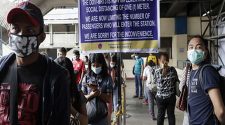Recently, Democratic presidential candidate Pete Buttigieg released a plan to improve health care in rural America. In a statement posted on his campaign website, he wrote, “Rural Americans are getting sicker and dying younger than people in cities.”
He is right, but his plan misses the mark. Buttigieg wants to spend billions of taxpayer dollars expanding public health insurance programs and have the government pay doctors to move to rural communities. Such a program would be expensive and take years to make an impact.
There is a far simpler and cheaper way to expand access to high-quality care for rural patients — and that is telemedicine, or care delivered remotely, with the aid of technology. It’s time for doctors, insurers, and patients to embrace it.
One-quarter of rural Americans say they are unable to get care when they need it, according to public opinion research from NPR, the Robert Wood Johnson Foundation, and the Harvard T.H. Chan School of Public Health.
For many, the nearest doctor is too far away. Rural areas have only 13 physicians for every 10,000 people. That’s less than half the rate in urban areas. On average, it takes rural Americans nearly twice as long to get to the nearest hospital, compared to urban residents.
These disparities have consequences. Rural Americans are more likely than their urban counterparts to die prematurely from heart disease, cancer and stroke, according to the Centers for Disease Control and Prevention.
Telehealth can help reverse some of these trends by bringing doctors to patients, albeit virtually.
Imagine someone who wakes up in pain. If the nearest doctor’s office is an hour away, he may be unable or unwilling to have a doctor give him a look. But if a visit with the doctor requires little more than firing up his smartphone, tablet, or computer, he is far more likely to get that pain checked out.
Telehealth can also offer patients access to specialists they might otherwise not be able to see. Many choose to practice in highly resourced “centers of excellence,” where they can put their extensive training to full use. These highly resourced institutions tend to be in more urban areas. Telemedicine can extend their reach into rural communities.
Consider what Children’s Hospital & Medical Center in Omaha has been able to do for families in western Nebraska with mental health care needs. Before the creation of its telehealth program in 2015, families routinely had to travel more than four hours for visits with child psychiatrists. Now, patients can go to primary care sites closer to their homes, where they see their psychiatrists via webcam. The program has saved rural families around 96,000 miles of travel each year.
Telehealth can also expand physicians’ professional networks and thereby empower them to deliver better care. Since 2003, the University of New Mexico has run Project ECHO, which connects rural doctors with specialists across the country. In weekly virtual clinics, rural doctors learn how to treat complex conditions like HIV, opioid addiction, and diabetes.
Evidence shows that telemedicine delivers positive outcomes for patients and reduces costs. Take the case of Frederick Memorial Hospital in Maryland, which provides certain chronic disease patients with tools to measure their vital signs. Doctors receive that data on an ongoing basis — and can thus catch health problems early on. Since 2016, the program has slashed hospitalizations by nearly 90 percent and cut the cost of caring for these patients by more than 50 percent.
Better yet, patients like telemedicine. In a recent survey, 70 percent of patients rated their satisfaction with telehealth visits as a nine or ten on a ten-point scale.
Fortunately, the practice is gaining traction. From 2015 to 2018, the share of physicians using video visits to examine patients increased from 5 percent to 22 percent. National utilization of telehealth grew more than 50 percent between 2016 and 2017.
Policymakers are doing their part, too. Recently, the Centers for Medicare and Medicaid Services implemented several measures that will expand Medicare beneficiaries’ access to telehealth services.
These efforts must be accelerated. Telemedicine is a surefire way to deliver high-quality care to millions of historically underserved Americans — and fast.
Sally Pipes is president, CEO and Thomas W. Smith Fellow in Health Care Policy at the Pacific Research Institute. Her latest book is “The False Promise of Single-Payer Health Care” (Encounter 2018). Follow her on Twitter @sallypipes.
Related Stories
Latest Articles
-
Opinion
-
Opinion
-
Opinion
-
Opinion
-
Opinion















